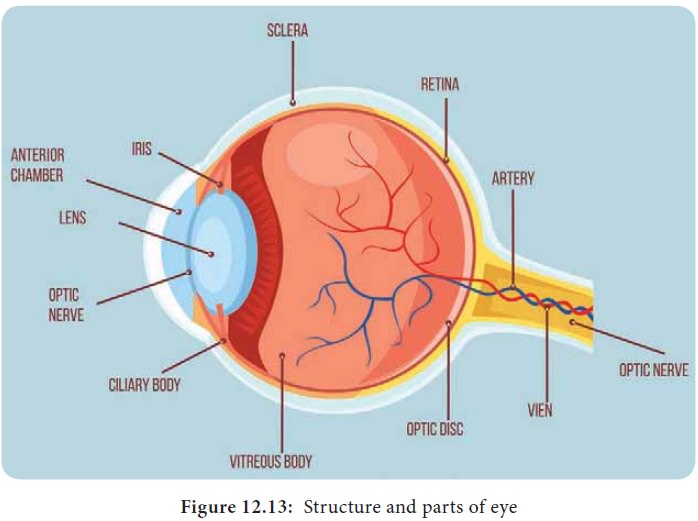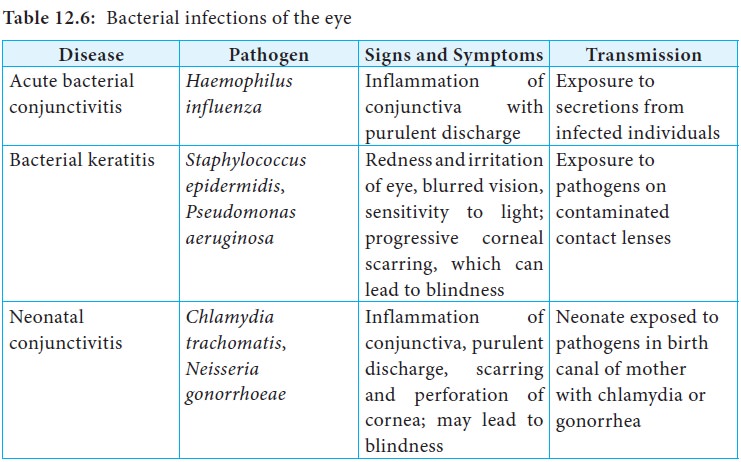Chapter: 11th Microbiology : Chapter 12 : Medical Microbiology
Ocular Infections
Ocular Infections
A number of microorganisms cause infection when introduced into
the mucosa of the eye. In general, bacterial eye infections can lead to
inflammation, irritation, and discharge, but they vary in severity. Some are
typically short-lived, and others are chronic and lead to permanent eye damage.
Prevention requires limiting the exposure to contagious pathogens. When
infections do occur, prompt treatment with antibiotics can often limit or
prevent permanent damage.
The external surfaces of the eye viz. the conjunctiva and cornea
are susceptible to infection. These are exposed to external world and are
easily accessible to infective agents. Particularly the conjunctiva is
susceptible because it is covered with eyelid that provides warm, moist and
enclosed environment in which contaminating organisms can quickly establish a
focus of infection. However, eyelid and tears protect the external surfaces of
the eye, both mechanically and biologically (Figure 12.13).

Factors that Protect the External Surfaces of the Eye
1. Eyelid gives mechanical protection to the surfaces 2. Tears (a) make the surfaces moist and prevent drying. (b) contains lysozyme- an enzyme that lyses the cell wall of Gram positive bacteria. (c) contains IgA antibodies that provide first line defense against viruses.
Infection of Eyelid
Most common cause of eyelid infection is Staphylococcus aureus.
Infection involves lid margins and cause blepharitis.
When the eyelid glands or follicles are affected stye (sticky
eye) is seen (Figure 12.14).

Conjunctivitis (inflammation of conjunctiva) Conjunctivitis or pink
eye can be caused by many different kinds of viruses and bacteria.
Trachoma
Trachoma, or granular conjunctivitis, is a common cause of
preventable blindness that is rare in the United States but widespread in
developing countries, especially in Africa and Asia. The condition is caused by
the same species that causes neonatal inclusion conjunctivitis in infants, Chlamydia trachomatis. Chlamydia
trachomatis can be transmitted
easily through fomites such as contaminated towels, bed linens, and clothing
and also by direct contact with infected individuals. Chlamydia trachomatis can also spread by flies that transfer infected
mucous containing Chlamydia trachomatis
from one human to another. Infections of eye are listed in Table 12.6.

Related Topics